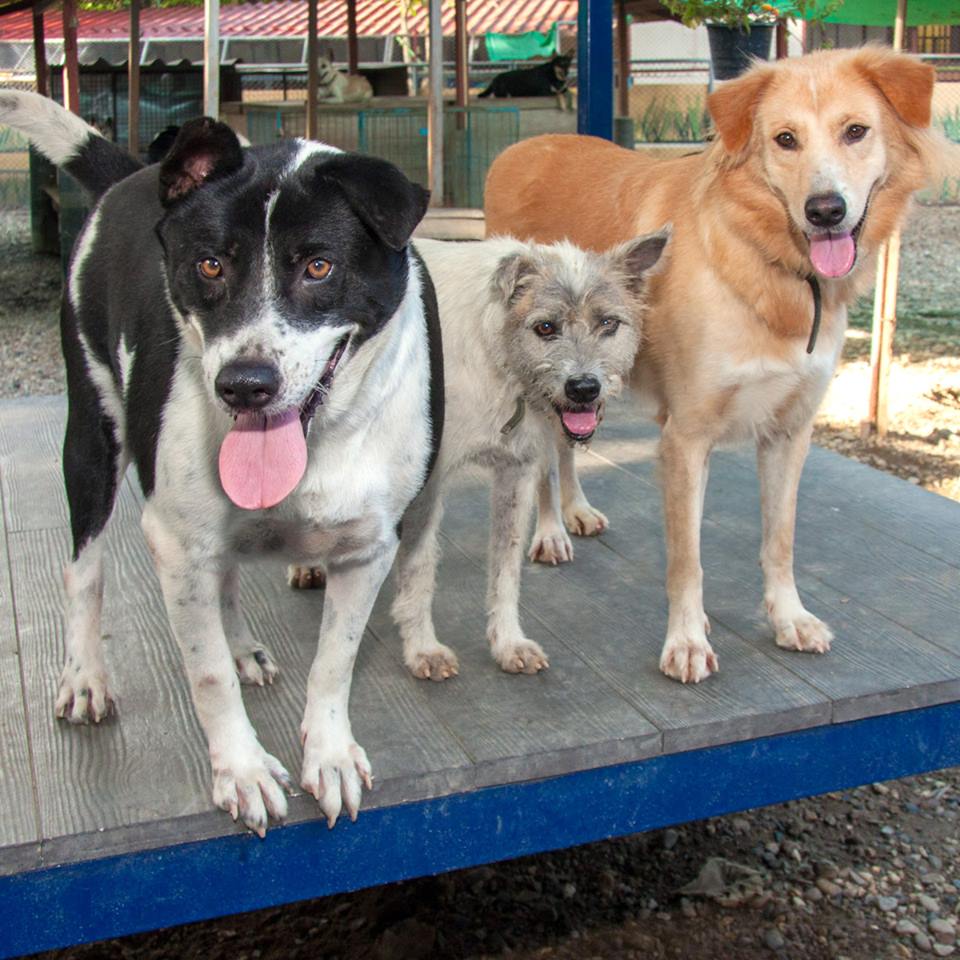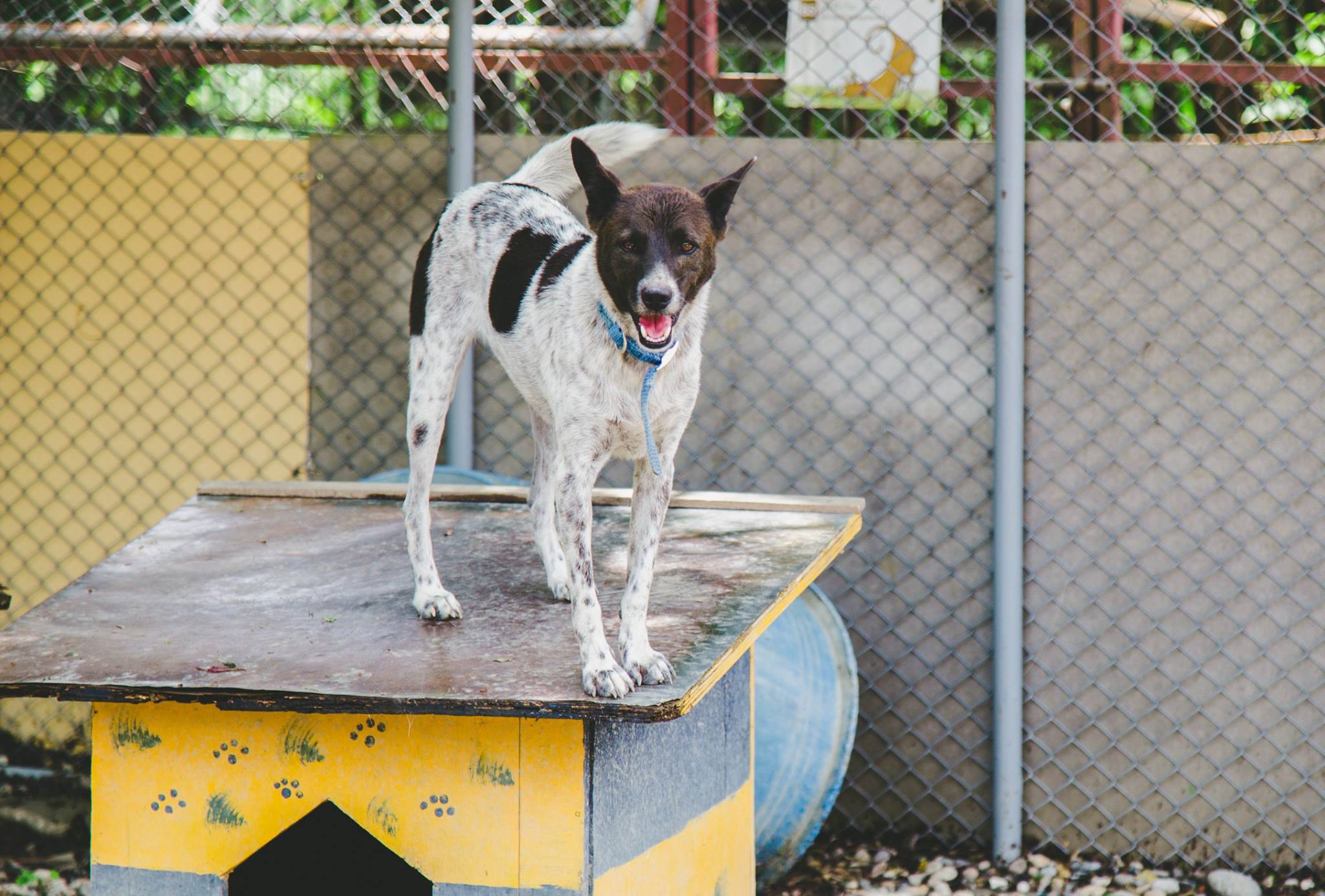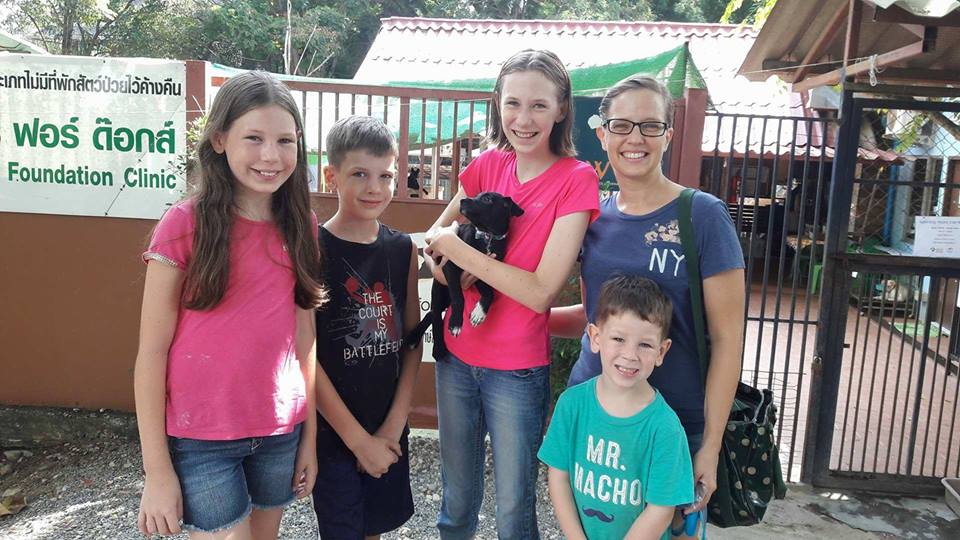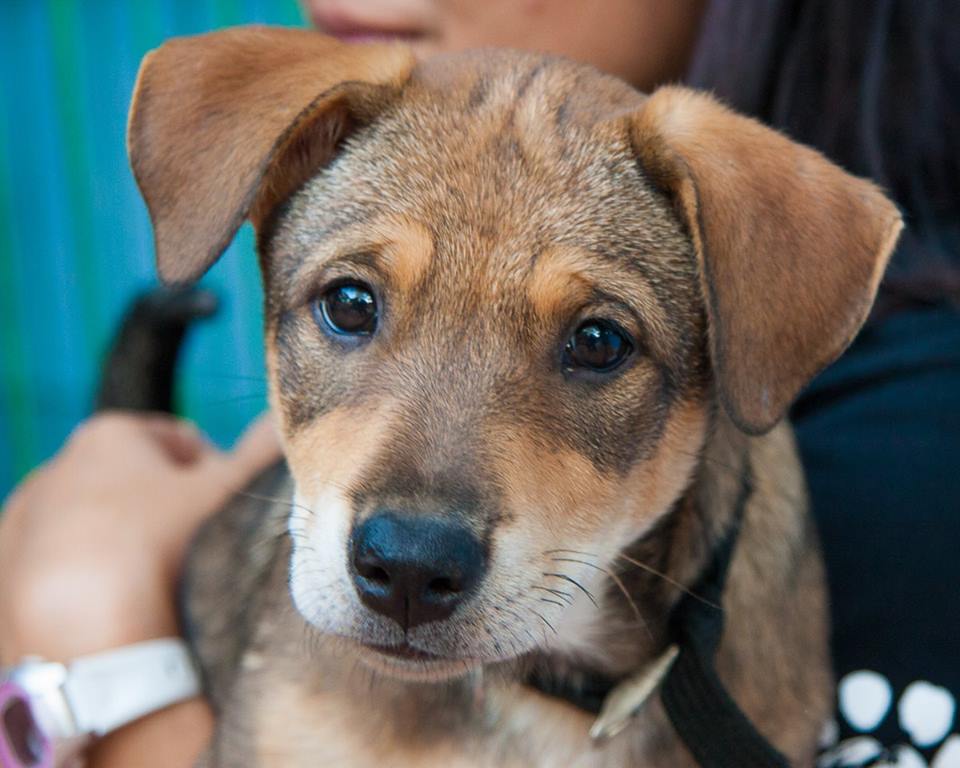We caught up with our team at the WVS Care for Dogs Shelter in Chiang Mai, Thailand to learn what an average day is like there...
When was the shelter set up?
The shelter was set up ten years ago by a local German expatriate called Karin after she found a few dogs in the area that needed medical treatment. Karin helped the dogs back to full health and found them loving homes to go to, rather than releasing the dogs back out on to the streets. As word got out that there was a lady willing to help sick and injured street dogs, more and more started showing up at her property until she had so many in her care that she purchased the land next to her house to build a shelter for the dogs waiting to find a forever loving home. WVS have been working closely with Care for Dogs for many years; initially through aid parcels, then sending volunteer vets and nurses, and then finally took over when the original founder needed to relocate back to Europe, due to family reasons.

What is an average day like in the shelter?
The staff start to arrive at the shelter from 07:00am to begin the daily routine. The caretaking team will focus on checking the dogs in their enclosures, cleaning each enclosure, feeding 110+ hungry residents and then general health and welfare checks start from 09:00 once the veterinary team have completed their morning rounds.
Volunteers come in from 09:30 to 15:30 and carry out various tasks to ensure the welfare and enrichment of the shelter residents is kept to a high standard. Volunteer duties include walking the dogs, social activities in the play gardens, training puppies, canine social skills, medical baths, assisting with medical checks, relaxing in the enclosures with dogs, water play in the local stream and any other positive interactions they may wish to carry out.

At any point during the day, the core team of Thai staff will have to respond to medical emergencies in and around the city of Chiang Mai or quite often at the gate to the shelter. Local residents are aware that WVS Care for Dogs offers medical treatment for street dogs who would otherwise be left untreated and will bring them directly to the WVS site just outside of the city. An average day will see around five cases come in. On top of the rescue cases, the ITC will be carrying out training for international and Thai veterinary students where they will be sterilising up to 25 dogs per day from the city and surrounding areas. �
The dogs will have their evening meal at 4pm before being given the chance to settle down for the evening in their social enclosures. The majority of the team will leave the site between 17:00 – 17:30 after making sure the dogs are settled, the water bowls are topped with fresh water and the cozy blankets are laid out for the dogs to get a comfortable night’s sleep. The last team members will leave around 18:30 from the ITC. There is one team member on site overnight to keep an eye and ear out for any issues that may crop up in the hours the site is closed but normally the dogs settle well as they are used to the routine.

How many dogs come into the shelter’s care?
We deal with most cases with the three R’s: Rescue, Rehabilitate (including sterilisation) and Return. Wherever possible the dogs will be treated, sterilised, vaccinated and returned to the GPS location they were collected from. In cases where the dog is at risk of further injury from fighting with other dogs, being poisoned by people, hit by cars etc, WVS Thailand will take the dog in as a resident and try to match the dog with a new home. As we primarily deal with ownerless street dogs, our team at the New Hope Training Facility will work on socialization, desensitizing techniques, basic training commands and general handling to help the dog in their transition from street wanderer to much loved domestic companion animal. Depending on a number of factors including age, previous experiences with people, exposure to human touch and prior living conditions, the dogs can take anywhere from a few weeks to a few months to rehabilitate and prepare for a new life in a loving forever home. WVS Thailand currently has around 100 street dogs to take care of on a daily basis. This number is down from more than 210 when WVS first took over the day to day running of the site. The environment was overcrowded before, and this led to multiple fights between dogs each day, and posed a threat to the volunteers and staff when they entered the enclosure. These days, dog to dog aggression and injuries to staff, volunteers and visitors is at an all-time low thanks to new safety procedures put in place by WVS.

What would you say to people considering adoption rather than buying a dog?
It’s as simple in Thailand as it is in the rest of the world. Adopting a dog from a responsible charity such as WVS Thailand will ensure that you are taking on a dog with a fully disclosed medical record, a full character assessment, all vaccinations complete and up to date, deworming treatments, social skills and basic training and the knowledge that you are helping out as part of the cure for Thailand’s street dog population. Many of the breeders here in Southeast Asia are ‘back-yard’ style with conditions that are appalling for the dogs to live in, especially the poor mothers who are often confined to small areas and expected to produce continuous litters of puppies without time to recover between each litter. The puppies are taken away from their mothers at such a young age that simple basic neuro skills such as bite inhibition and dog to dog interactions can be damaged for the rest of the dog’s life leading to behavioral issues further down the line. These behavior issues can cause the owners to resent their new pure breed puppies and they often find their way on to the streets, adding to the population of non-sterilised dogs with behavior issues in local neighbourhoods.

Adopting a shelter dog can be one of the most rewarding acts a person could ever do. The life of the dog you adopt will change forever and the love they shine back to you each and every day will show you just how much they appreciate your open heart and dedication to the life every dog truly deserves.
WVS Thailand offers full behavior support throughout the life of the shelter dog once they have been adopted. From telephone consultations to home visits, adopters can be confident that if there is ever an issue with their new domestic companion, WVS Thailand is on standby to help out however they can.

What impact is WVS having on Chiang Mai?
Through our dedicated sterilization program at the shelter and our outreach clinics around the city and beyond, WVS is bringing the street dog population around Chiang Mai down in a controlled and humane way with a direct impact on the local dog population and the residents that call this city their home. Working closely with local government agencies and the population of Chiang Mai City, we are able to split the city into different zones and target specific areas to directly impact the population of street dogs through sterilization and free medical care. We’re rescuing more than 500 emergency cases each year and sterilizing close to 5000 local dogs with plans for the future to increase these numbers. An unsterilized pair of dogs can produce up to 36,000 offspring over the course of 6 years! The number of unwanted street dogs that WVS has prevented so far is mind-blowing!
With an education program earmarked for 2018, WVS is set to continue to aid the population of Chiang Mai through targeted lessons aimed at the younger generation so that a shift in culture and attitudes towards street dogs can be fostered from an early age.

Why is it so important for the shelter to exist? What is life like for street dogs in general in Thailand?
Life for a street dog in Thailand can be tough, especially in the rural areas surrounding the city. Some of the street dogs are lucky enough to have people around that will lay down food and water for them but many are left to scrounge and scavenge on their own. These dogs are seen as a problem as they can tip over bins, take chickens away from farmers and generally harass livestock in the area that they are living in. Once these type of incidents start to occur the local people can become opposed to their presence and poison traps can be laid out or the dogs will be beaten with sticks/stones when the farmers see them on their land.
The roads here are either small and narrow or huge multi-lane freeways meaning that the dogs can have a hard time dealing with traffic and crossing roads. More than half of the dogs taken into our care are traffic related injuries and it’s not at all uncommon to see animals that have come to a sudden end in life by the side of the road.

The shelter provides a safe space for any street dog that finds themselves unlucky enough to be in a desperate situation where medical attention or a controlled environment is needed. These dogs have nobody else to take care of them and would otherwise be left to suffer with some horrendous injuries and medical conditions if WVS was not in the area to provide the shelter and treatment they need.